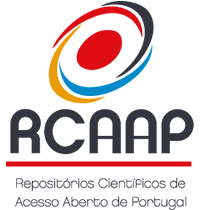Optimization of the derivatization procedure for the separation of the stereoisomers of 1,3-dimethylamylamine (1,3-DMAA) by gas chromatography - preliminary data
DOI:
https://doi.org/10.48797/sl.2024.230Keywords:
PosterAbstract
Background: 1,3-Dimethylamylamine (1,3-DMAA), also known as methylhexanamine, is a central nervous system stimulant with structural similarities with amphetamines and therefore presenting overlapping biological and detrimental effects [1]. Despite being banned, the presence of 1,3-DMAA in doping controls and dietary supplements continues to be of significant concern. This molecule has two stereogenic centres and thus four stereoisomers [2]. It is widely recognized that enantiomers may exhibit different biological activity, including pharmacokinetics, pharmacodynamics, and toxicity. Consequently, the development of analytical methods for enantioselective separation of 1,3-DMAA is crucial for an accurate determination of the risks associated with each of these stereoisomers. Objective: To develop an indirect method by gas chromatography coupled to mass spectrometry (GC-MS) for the separation and identification of the stereoisomers of the 1,3-DMAA. Methods: 1,3-DMAA was regenerated with sodium hydroxide, extracted with 0.1% triethylamine in hexane and then derivatized using the enantiomeric pure reagent (R)-(-)-α-methoxy-α-(trifluoromethyl)phenylacetyl chloride ((R)-MTPA-Cl). Subsequently, the sample was evaporated, reconstituted in anhydrous ethyl acetate, and analyzed by GC-MS. The chromatographic conditions were established using a capillary column containing 5% diphenyl-95% dimethylpolysiloxane (30 m × 0.25 mm × 0.25 µm), an injector temperature set to 280 ºC, with a temperature ramp starting at 140 ºC and increasing up to 215 ºC at a flow rate of 1 mL/min to a total run of 12.32 min. Results: As preliminary data indicate, the derivatization procedure allowed the formation of 4 diastereomers of 1,3-DMAA. The chromatographic conditions were optimised, allowing for the separation of the four diastereomers within 12 min. Conclusions: Derivatization and chromatographic conditions were established for enantioselective separation of 1,3-DMAA by GC-MS. Further validation of the method will be crucial for understanding the diastereomers' differential pharmacokinetics and pharmacodynamics, and consequently, the perils associated with their presence in food supplement samples.
References
1. Rodrigues, A.N.; Dinis-Oliveira, R.J. Pharmacokinetic and Toxicological Aspects of 1,3-Dimethylamylamine with Clinical and Forensic Relevance. Psychoactives (2023), 2, 222–241.
2. Vorce, S.P.; Holler, J.M.; Cawrse, B.M.; Magluilo, J. Dimethylamylamine: A Drug Causing Positive Immunoassay Results for Amphetamines. J Anal Toxicol (2011), 35,183–187.
Downloads
Published
How to Cite
Issue
Section
License
Copyright (c) 2024 Maria Mexia-de-Almeida, Diana Dias da Silva, Ricardo Jorge Dinis-Oliveira, Cláudia Ribeiro

This work is licensed under a Creative Commons Attribution 4.0 International License.
In Scientific Letters, articles are published under a CC-BY license (Creative Commons Attribution 4.0 International License), the most open license available. The users can share (copy and redistribute the material in any medium or format) and adapt (remix, transform, and build upon the material for any purpose, even commercially), as long as they give appropriate credit, provide a link to the license, and indicate if changes were made (read the full text of the license terms and conditions of use).
The author is the owner of the copyright.









